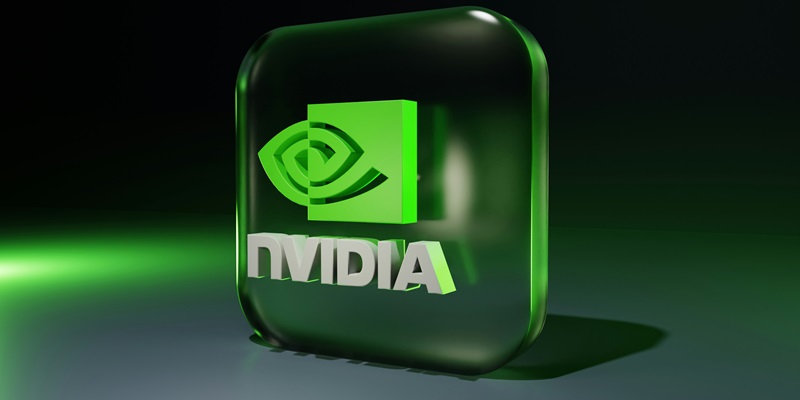Nvidia’s GeForce RTX technology, which debuted in 2018, has been a transformative force in both the gaming industry and AI computing. The groundbreaking technology was Nvidia’s first consumer GPU tailored specifically for AI, and its impact has been profound. This technology fosters an ecosystem that now includes over 100 million users and supports more than 500 AI applications. In this article, we delve into the various ways GeForce RTX has revolutionized these fields. The capability of the GeForce RTX to enhance both productivity and entertainment underscores its significance in today’s technological world.
Elevating Gaming Experiences
Nvidia’s GeForce RTX has significantly enhanced gaming experiences, setting new standards for performance and visual quality. One of the standout features is the remarkable improvement in frame rates, which ensures smoother gameplay. Higher frame rates reduce motion blur and input lag, allowing gamers to enjoy more responsive and immersive experiences. This creates a noticeable difference, particularly in fast-paced games where quick reflexes are essential.
The visual fidelity brought by GeForce RTX is another critical component. The technology enables real-time ray tracing, resulting in more realistic lighting, shadows, and reflections. These improvements not only enhance the visual aesthetic but also contribute to the overall immersion, making games feel more lifelike. Gamers are now able to enjoy stunning graphics that were previously unattainable, providing a richer and more engaging experience. GeForce RTX sets a new benchmark in the gaming world, making these advancements almost a necessity for those wanting to experience cutting-edge gaming.
Moreover, Nvidia’s Deep Learning Super Sampling (DLSS) technology leverages AI to upscale lower-resolution images, delivering near-native resolution quality while conserving processing power. This allows players to experience the best visuals without compromising on performance. These innovations have redefined what gamers can expect from their hardware, pushing the limits of visual excellence and performance. With each generation, the GeForce RTX continues to enhance the gaming landscape, offering new possibilities and setting higher standards for what gamers can achieve.
Revolutionizing Creative Software with AI
Beyond gaming, the GeForce RTX has made significant strides in the creative software domain by integrating AI-powered features into popular tools such as DaVinci Resolve and Adobe Premiere Pro. For video editors and content creators, these enhancements have been a game-changer. AI capabilities automate complex tasks like video editing, color correction, and special effects generation, allowing creators to focus more on their artistic vision. This not only saves time but also opens up new creative possibilities.
In DaVinci Resolve, for example, AI-powered tools can analyze footage and make intelligent adjustments to color and lighting. This automation speeds up the editing process and ensures consistency across projects. Similarly, in Adobe Premiere Pro, AI can identify scene changes, assist with object removal, and even generate effects—tasks that would otherwise require considerable time and effort. These tools amplify the creative process, pushing the boundaries of what is possible in video creation and editing.
These advancements have democratized high-level creative processes, making them accessible to a broader audience. Both amateur and professional creators can now produce polished and professional-quality content with greater ease. GeForce RTX thus empowers creators to push the boundaries of their craft, opening new avenues for creativity and innovation. The integration of AI into creative software brings a level of sophistication and efficiency that was previously unachievable, turning ambitious creative projects into attainable goals for many users.
Simplifying Developer Workflows
GeForce RTX doesn’t just benefit gamers and creators—it also offers substantial advantages for developers. The technology includes AI tools specifically designed to simplify workflows, making prototyping, debugging, and deploying applications more efficient. These tools accelerate the pace of software development by providing tailored resources that help customize and deploy AI models seamlessly. This ensures that developers can focus more on innovation and less on cumbersome development processes.
One key feature is Nvidia’s Compute Unified Device Architecture (CUDA) platform, which allows developers to harness the parallel processing power of GPUs. CUDA accelerates computation-heavy tasks like machine learning and data processing, enabling developers to tackle complex problems more efficiently. This, in turn, leads to faster innovation and shorter development cycles. Developers can leverage these capabilities to create more sophisticated applications that push the boundaries of what’s possible in AI and machine learning.
Another valuable tool is the Nvidia TensorRT, a Software Development Kit (SDK) for high-performance deep learning inference. TensorRT optimizes neural network models for maximum performance, allowing developers to build applications that can run efficiently on edge devices. These advancements streamline the development process and ensure that AI-powered applications perform optimally. The combination of CUDA and TensorRT provides a robust framework for developers, enabling them to achieve more efficient and powerful outcomes in their projects.
Tailored Solutions for Personal and Professional Use
Introduced in 2018, Nvidia’s GeForce RTX technology has been a game-changer in the realms of gaming and AI computing. This pioneering technology marked Nvidia’s first consumer GPU specifically designed for artificial intelligence, and its influence has been nothing short of transformative. GeForce RTX technology supports an ever-growing ecosystem that now boasts over 100 million users and encompasses more than 500 AI applications. Its ability to elevate both productivity tools and entertainment options highlights its critical role in today’s tech landscape.
One key aspect of GeForce RTX’s impact has been its real-time ray tracing capability, which has revolutionized visual realism in gaming, making scenes look more lifelike than ever before. It also accelerates AI tasks such as deep learning and machine learning, providing robust computational power to a wide range of applications. As a result, professionals in fields ranging from medical research to autonomous driving benefit from its advanced features. The versatility and power of GeForce RTX ensure that it remains at the forefront of both gaming and AI advancements, continually pushing the boundaries of what is possible.

